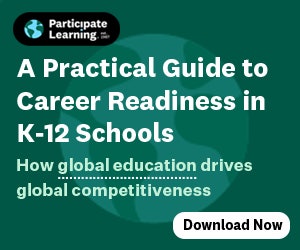
Many school districts still rely on one-time workshops, despite evidence showing that they don’t typically lead to better teaching outcomes. Teachers frequently struggle to access PD opportunities due to scheduling conflicts, resource limitations, and a lack of tailored content. In rural districts, these challenges are compounded by geographic isolation and fewer staff to support PD initiatives. Even when professional learning is available, districts often lack the tools to measure its impact on instruction and student outcomes.
Recent studies suggest that shifting toward practice-based PD—such as structured teaching simulations, video analysis, and job-embedded coaching—can improve teachers' ability to elicit and respond to student thinking. A Harvard Graduate School of Education experiment found that teachers trained with hands-on, practice-based methods outperformed those using traditional PD models, particularly in responding to student misconceptions. However, implementing such models at scale requires overcoming logistical and financial hurdles.
The study: Testing three approaches
Researchers randomly assigned 185 college students to one of three teacher preparation approaches:
- Traditional pedagogy – Participants read research on teaching strategies, discussed it, and reflected on how it applied to their experiences.
- Practice-based pedagogy – Participants analyzed videos of expert teachers and engaged in practice-based exercises with feedback from an instructor.
- Mixed approach – A combination of reading/discussion and video analysis, but without the hands-on teaching practice.
Key finding: Practice-based training yields the biggest gains
The study measured participants’ ability to elicit and respond to student thinking in both written assessments and live teaching simulations. The results showed:
- Both the practice-based and mixed approaches led to significant improvements compared to the traditional approach.
- Participants in the practice-based approach outperformed all other groups in live teaching simulations, especially when responding to incorrect student answers—a more challenging task requiring deeper pedagogical reasoning.
Why it matters: Preparing teachers for real classrooms
Teacher PD programs often face a dilemma: there is only so much time to train new teachers, so which pedagogies should be prioritized? This study provides compelling evidence that hands-on, practice-based methods help teachers internalize key instructional strategies and apply them flexibly in real classroom scenarios.
Notably, the research challenges concerns that practice-based approaches might be too rigid or narrow. Instead, the findings indicate that these methods enhance teachers' ability to make informed, responsive decisions—critical for effective instruction.
Implications for teacher education
A school improvement effort can never outpace the quality of its teachers. However, teacher PD has often been proven to be ineffective. This new study suggests that more practice-based methods, such as rehearsals, video analysis, and structured teaching simulation can help. This, anecdotally, makes sense. Teaching, like learning, is an active process. This method can help to ensure that novice teachers develop not just theoretical knowledge but also practical skills essential for high-quality instruction.
Jason McKenna is V.P. of Global Educational Strategy for VEX Robotics and author of “What STEM Can Do for Your Classroom: Improving Student Problem Solving, Collaboration, and Engagement, Grade K-6.” His work specializes in curriculum development, global educational strategy, and engaging with educators and policymakers worldwide. For more of his insights, subscribe to his newsletter.
























